We may receive a commission when you use our affiliate links. However, this does not impact our recommendations.
Editor’s note: With the holidays upon us, I’m looking through vintage issues of the magazines and books we own for fun handmade gifts – things that you can build in not too much shop time, but that will help to create a lifetime of memories for the recipients. I’ll post (at least) two every week between now and the new year. Not all of them will be for kids – but I know I loved the wooden items my grandfather made for me when I was young, so a toy seemed like a great place to start. — Megan Fitzpatrick
A Three-Wheeled Cruiser for the Rug-Racer Set
by Jack Fisher
from the November/December 1989 issue of American Woodworker
About the time my grandson was beginning to walk, I got to thinking it was also time to build that kiddie car I’d been remembering from ‘way back in my childhood. Remember that solid-wood beauty you cruised around on when you were a two-year-old? If I close my eyes, I can still picture it. And, if I try very hard, I can faintly recall what it felt like to zoom off the dining room carpet, wheel her through the door and onto the kitchen linoleum, flat out. Wow!
But I couldn’t make one like that. That one had a turned front steering assembly, together with nicely turned wooden handles; and I had no lathe.
While I tried to think my way around the no-lathe problem, I also thought of some other changes that might improve a new model over the one from my youth, if that’s possible. Two ideas came to mind. First was the concept of the pickup truck, which has grabbed the imagination of automobiling in America today – pickups are in. The other idea? I’ve heard more than one mother complain about her kids leaving toys spread all over the place. Was it possible a youngster could get excited enough about having a “pickup” that, at the end of the day, the kid would really enjoy driving around, picking up all those stray toys? Why not try it?
Designing the Pickup
To help visualize the toy, I made a sketch. I usually do that. It helps me clear up the design and often leads to a better way of doing something. For instance, I’ve got this thing about making do with what I’ve got. I’ve carried this philosophy around with me for a long time. “You have no lathe, so what can you do about that steering column?,” I asked myself. I like the challenge; nice discipline, and it keeps your thinking flexible, too.
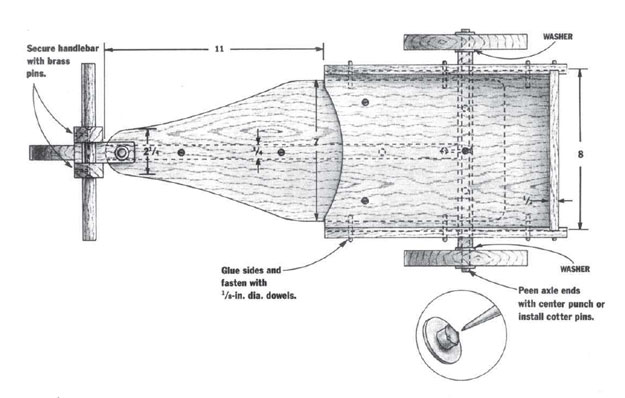
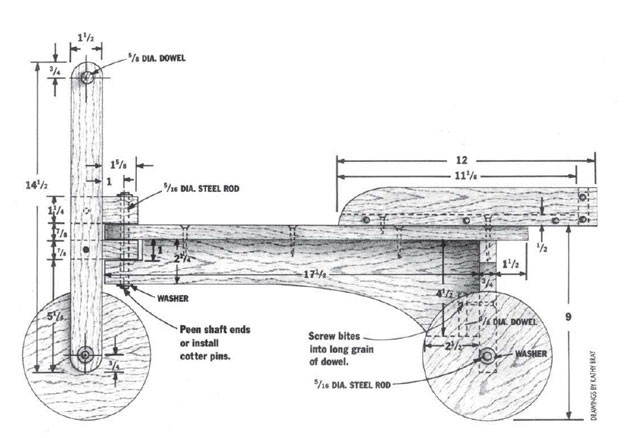
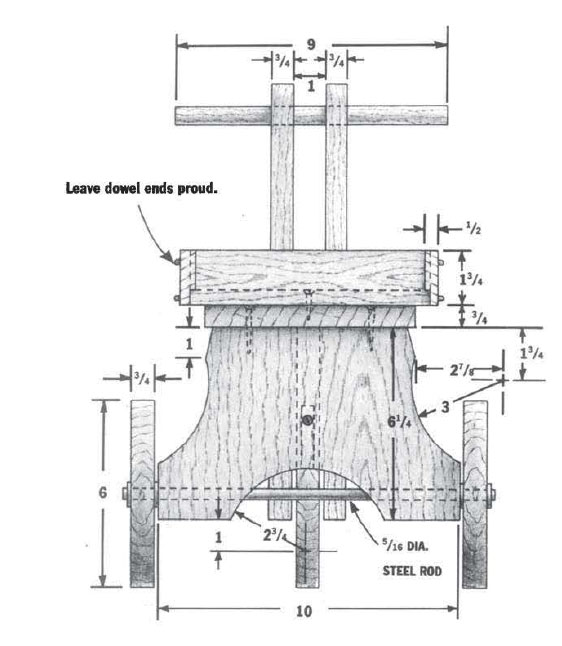
When I checked my shop for materials on hand, I found I had the wood (I used red oak) but wondered what I might use for the axles and yoke pin. My old can of large bolts turned up none the right size for those jobs. That’s when my sketch led to the idea of another way of doing it. I had a piece of 5/16″ steel rod left over from another job. And a can of assorted flat washers produced six that fit snugly on the 5/16″ rod. I knew that I could peen the ends with a hammer to hold the wheels on, but I came up with the idea of doing it with a center punch near the edge of the rod, instead, as shown in the detail on the drawing. I tried it on a sample and, by gosh, it worked! See what I mean? Make do.
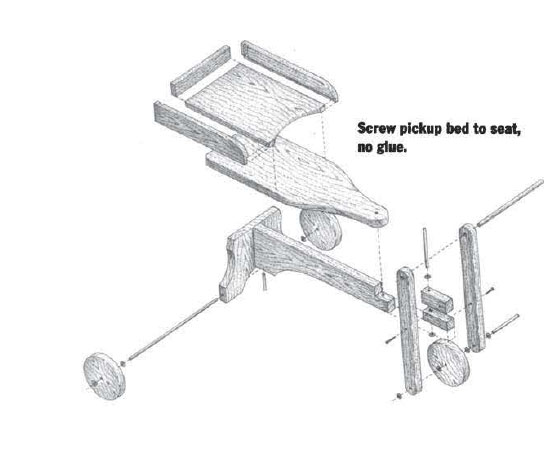
One night while I was supporting my wobbling grandson as he tried those early first steps, I had my daughter measure him from crotch to floor. That’s how I came up with a 9″ seat height for the pickup.
After the sketch, I usually get right on with the construction, eyeing the thing as I go along. I get the “feel” of the dimensions as I work – you know, “that looks about right there.” Don’t get me wrong. I like to be accurate. But, especially while designing (let’s say this pickup is a sort of prototype), I prefer to work to the feel of things. I find that more satisfying.
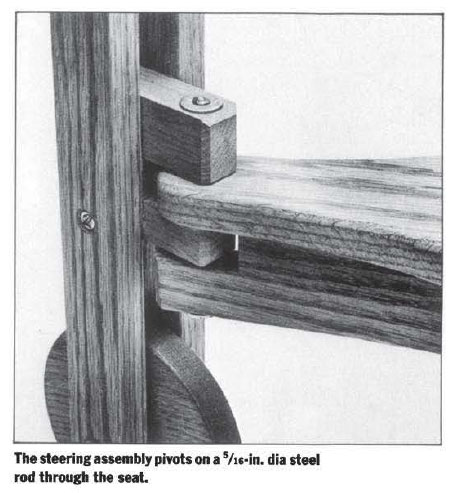
A little while after I had built the pickup and given it to my grandson, his mother said she thought it could be built wider between the rear wheels-it was a bit tipsy. It also occurred to me that the pickup would roll more easily over thick carpets if the wheels were 6″. dia. instead of 5″, like mine. I asked AMERICAN WOODWORKER to take all this into consideration on the detail drawings. (Editor’s Note: We did.) You know, there’s always room for improvement – or at least, adaptation. By the way, the “pick-it-up” idea didn’t help a bit. His mother says he’s still a mess – lovingly…but he sure loved that pickup.
Jack Fisher is a woodworker and painter in New Hope, Penn. Before he retired in 1978, he taught Industrial Arts at New Hope/Solebury High School.
You can get all 30 years of American Woodworker on one CD – available at ShopWoodworking.com.
Here are some supplies and tools we find essential in our everyday work around the shop. We may receive a commission from sales referred by our links; however, we have carefully selected these products for their usefulness and quality.








